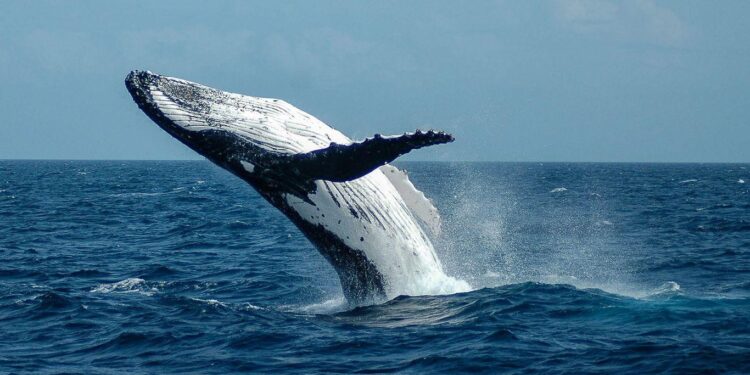Title: Whales and Dolphins Face Growing Threats Amid Ecological Decline in Gulf of California
In a stark reminder of the fragility of marine ecosystems, a recent report has unveiled alarming findings regarding the declining health of the Gulf of California, a region renowned for its rich biodiversity and vibrant marine life. Whales and dolphins, long emblematic of the area’s diverse marine mammals, are now among the most vulnerable species as overfishing, pollution, and climate change exert unprecedented pressures on their habitats. The study, highlighted by Mongabay, underscores not only the urgent need for conservation efforts but also the broader implications of ecological decline in one of the world’s most stunning marine environments. With the Gulf’s delicate balance hanging in the balance, wildlife advocates are calling for immediate action to protect these iconic creatures and their home.
Whales and Dolphins Face Threats Amid Ecological Crisis in the Gulf of California
The Gulf of California, a vibrant marine ecosystem home to diverse wildlife, is facing an unprecedented ecological crisis that poses significant risks to its iconic inhabitants, particularly whales and dolphins. Recent reports indicate alarming declines in fish populations and the degradation of critical habitats, largely attributed to human activities such as overfishing, pollution, and climate change. These factors not only threaten the food sources necessary for the survival of these marine mammals but also disrupt the delicate balance of their habitat, making it increasingly difficult for them to thrive in this once-abundant region.
Conservationists are urging immediate action to address these threats, highlighting the need for stricter fishing regulations, pollution controls, and habitat restoration efforts. The situation calls for a multifaceted approach, which includes:
- Implementing sustainable fishing practices to ensure the longevity of fish populations
- Establishing marine protected areas that safeguard critical habitats for dolphins and whales
- Enhancing pollution management to reduce harmful runoff and improve water quality
- Engaging local communities in conservation efforts to foster stewardship of marine resources
Without immediate and concerted efforts, the future of whales and dolphins in the Gulf of California remains precarious, with the potential for irreversible damage to their populations. Addressing these ecological challenges is not only vital for the survival of these majestic creatures but also for the overall health of the marine environment, which is interconnected with the livelihoods of communities that depend on the sea.
Investigating the Decline: Key Factors Impacting Marine Life in the Region
The alarming report on the ecological decline in the Gulf of California highlights several critical factors contributing to the precarious state of marine life, particularly species such as whales and dolphins. Among the key elements identified are:
- Overfishing: Unsustainable fishing practices deplete crucial fish stocks, disrupting the entire marine food web.
- Pollution: Runoff from agricultural and industrial sources introduces toxins into the water, impacting both wildlife and their habitats.
- Climate Change: Rising sea temperatures and acidification affect the availability of prey and the overall health of marine ecosystems.
- Habitat Destruction: Coastal development and human encroachment destroy critical breeding and feeding grounds.
In light of these distressing trends, a recent survey indicated a stark reduction in marine mammal populations. According to the data collected:
| Species | Population Estimate (2023) | Decline Since 2010 (%) |
|---|---|---|
| California Gray Whale | 20,000 | 15% |
| Bottlenose Dolphin | 10,000 | 25% |
| Fin Whale | 8,000 | 30% |
This downward trend vividly illustrates the urgent need for intervention and sustainable management practices to ensure the survival of these iconic marine mammals and their habitat in the Gulf of California.
Urgent Actions Needed to Protect Endangered Species and Restore Ecosystem Health
As alarming reports highlight the ecological decline in the Gulf of California, immediate measures become necessary to safeguard the region’s marine biodiversity. Whales and dolphins, among the most vulnerable species, face dire threats from habitat degradation, pollution, and overfishing. To combat these challenges, stakeholders must collaborate and implement strategic conservation plans. The following actions are critical:
- Establishing Marine Protected Areas (MPAs): Designating specific zones in the Gulf for exclusive conservation will help reduce human interference and promote recovery.
- Implementing Sustainable Fishing Practices: Limiting fishing quotas and introducing seasonal closures can protect crucial breeding grounds and restore fish populations.
- Enhancing Pollution Control Measures: Strengthening regulations on waste disposal and runoff will help safeguard marine ecosystems from harmful chemicals and plastics.
- Promoting Community Engagement: Involving local communities in conservation efforts fosters stewardship and raises awareness of the importance of preserving marine life.
To further illustrate the gravity of the situation, the following table summarizes the status of key marine species in the Gulf of California, highlighting the urgent need for action:
| Species | Status | Main Threat |
|---|---|---|
| California Gray Whale | Endangered | Climate Change |
| Pacific Bottlenose Dolphin | Vulnerable | Pollution |
| Blue Whale | Endangered | Ship Strikes |
| Vaquita | Critically Endangered | Bycatch |
Key Takeaways
the alarming report on the ecological decline of the Gulf of California highlights the urgent need for concerted conservation efforts to protect the region’s marine life. With whales and dolphins facing increasing threats from habitat degradation, pollution, and overfishing, the survival of these iconic species hangs in the balance. As scientists and conservationists call for immediate action, it is imperative that policymakers, businesses, and communities work together to safeguard the rich biodiversity of this vital ecosystem. The fate of the Gulf’s marine inhabitants is a stark reminder of our shared responsibility to preserve the natural world, and ensuring a sustainable future for these majestic creatures is a challenge that cannot be ignored. The time to act is now, before the sounds of the ocean’s giants are silenced forever.






























